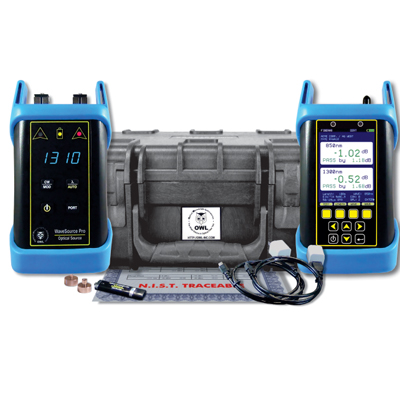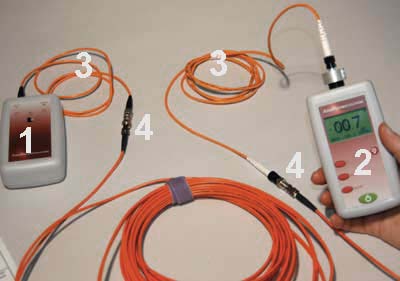Efficient Optical Fibre Testing Equipment for Reliable Performance Analysis
Efficient Optical Fibre Testing Equipment for Reliable Performance Analysis
Blog Article
Important Features to Try To Find in Optical Fiber Testing Tools
When evaluating optical fiber testing devices, numerous crucial functions call for mindful consideration to guarantee optimum performance and integrity. Key attributes such as precision, precision, and easy to use interfaces play an essential role in effective dimension and convenience of use. The significance of transportability and toughness can not be overemphasized, especially for on-site applications. Compatibility with existing market criteria enhances capability, while advanced measurement abilities, consisting of TDR and OTDR testing, deal important understandings into network integrity. Comprehending these attributes will drop light on exactly how to pick the right tools for your particular requirements. What aspects might you focus on?
Accuracy and Precision
Accuracy and accuracy are important specifications in the analysis of optical fibre screening devices. These two characteristics make sure that dimensions show real efficiency of fiber optic systems, which is vital for effective network installment, upkeep, and troubleshooting. Precision refers to the distance of a gauged worth to the real value, while precision represents the repeatability of dimensions under unchanged problems.
When selecting optical fibre screening tools, it is important to think about tools that give high precision and accuracy to minimize errors in data analysis. Devices such as optical time-domain reflectometers (OTDRs) and power meters must have calibration devices to make certain constant performance with time. Additionally, the requirements given by producers must information the tools's dimension unpredictability, which directly impacts the dependability of test results.
Moreover, the efficiency of optical fiber screening devices can be affected by ecological aspects, such as temperature level and moisture. Choosing tools made to mitigate these variables will enhance measurement fidelity. Finally, buying optical fiber screening devices with robust accuracy and accuracy attributes is basic for preserving ideal network performance and guaranteeing the integrity of fibre optic interactions.

User-Friendly User Interface
The efficiency of optical fibre screening equipment is not solely established by its accuracy and accuracy; a straightforward interface plays a significant function in enhancing functional efficiency. A properly designed interface streamlines the interaction in between the service technician and the equipment, permitting a more user-friendly understanding of complex features.
Trick functions of an user-friendly user interface consist of clear navigation food selections, logical designs, and conveniently accessible controls. These aspects make it possible for technicians to carry out examinations promptly without comprehensive training, minimizing the chance of individual mistake - ofda. Moreover, visual indications such as progress bars, informs, and visual depictions of information can considerably improve the individual experience by giving prompt responses on the screening process.
Furthermore, adjustable setups can additionally simplify procedures by allowing customers to readjust parameters according to particular testing demands. This flexibility not just conserves time yet additionally makes certain that the tools fulfills varied application needs.
Incorporating help attributes, such as tooltips and detailed handbooks, into the interface can further equip customers, advertising self-sufficiency and self-confidence in running the tools. Inevitably, a straightforward interface is crucial for maximizing the possibility of optical fiber screening equipment, resulting in extra reliable and reliable screening outcomes.
Portability and Durability
Transportability and sturdiness are vital attributes of optical fiber screening equipment, making sure that it can withstand the rigors of various atmospheres while remaining simple to transport. Professionals typically function in diverse setups, from telecommunications centers to remote installations, making it critical that testing devices are lightweight and small (ofda). Tools developed with transportability in mind usually includes ergonomic handles and situations that facilitate simple and easy movement, therefore boosting operational effectiveness on-site
Durability is similarly essential, as optical fibre testing devices is usually exposed to extreme problems, including temperature changes, dampness, and physical impacts. Gadgets built with sturdy products such as reinforced plastics or metal housings are much better matched for these settings, minimizing the risk of damage during usage and transportation. Furthermore, tools with click over here now water and dirt resistance rankings, such as IP rankings, ensures reputable efficiency in tough problems.
Compatibility With Specifications
Making sure compatibility with market requirements is essential for optical fiber screening tools, as it straight influences the integrity and legitimacy of examination outcomes. Optical fiber networks go through rigorous efficiency requirements established by numerous companies, including the Telecommunications Industry Association (TIA) and the International Electrotechnical Payment (IEC) Examining tools has to follow these criteria to make sure that measurements correspond and comparable across various systems and settings.
When choosing optical fibre screening devices, users must confirm that the gadget meets relevant criteria significant to their specific application, such as those pertaining to attenuation, transmission capacity, and crosstalk. Devices that is compliant with well established standards not just helps in accomplishing exact results yet likewise promotes interoperability among tools from different suppliers.
In more addition, compatibility with standards ensures that the tools can be used in regulatory conformity situations, which is critical for projects in fields such as telecommunications, aerospace, and armed forces applications. Consequently, investing in optical fiber testing tools that lines up with current market standards is a basic aspect of keeping quality control and achieving optimum network performance.
Advanced Dimension Capabilities
Advanced measurement abilities are a specifying feature of contemporary optical fiber testing devices, enabling extensive evaluation of network efficiency. These capabilities make sure that technicians can examine critical parameters such as signal loss, diffusion, and transmission capacity, which are important for preserving optimum interaction efficiency.
One secret element is the ability to conduct time-domain reflectometry (TDR) and optical time-domain reflectometry (OTDR) tests. These methods make it possible for users to identify faults, determine the size of fibers, and establish the location of problems with amazing accuracy - ofda. Sophisticated equipment frequently consists of the capability to determine optical power levels, aiding to examine the general health of the network and make certain conformity with the required requirements.
Furthermore, some screening devices offer innovative formulas for real-time analysis, making it possible for quicker diagnosis and troubleshooting. This is particularly crucial in high-speed networks where downtime can result in substantial monetary losses. With the combination of sophisticated software interfaces, users can envision data better, facilitating educated decision-making. Finally, purchasing optical fibre screening equipment with innovative measurement capacities is important for making certain network dependability and efficiency in today's demanding telecoms landscape.
Final Thought

Report this page